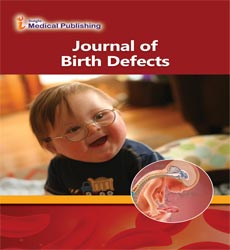Abstract
Congenital Anomalies Presenting to a Tertiary Neonatal Intensive Care Unit: A Descriptive Study
Background: Congenital anomalies are becoming an increasingly important contributor towards paediatric morbidity as a consequence of improved survival and higher standards of care.
Aims: To examine the various congenital anomalies admitted to a tertiary neonatal intensive care unit, focusing on sociodemographic factors, resources utilized, and short-term outcome.
Methods: A retrospective study was undertaken through examining medical records of all babies admitted with congenital anomalies to the Neonatal Intensive Care Unit (NICU) of John Hunter Children’s Hospital, NSW, from 2005 to 2015. Socio-demographic details and antenatal risk factors were evaluated. A descriptive analysis was done on the various presenting anomalies and their secular trends. The duration of intensive care as well as average cost were inspected. Finally, an evaluation was done on the short-term outcome of these babies in terms of mortality, discharge from NICU or transfer to another hospital.
Results: There were 891 admissions with congenital anomalies, with a prevalence rate of 76.15 per 1000 admissions. The male to female ratio was 1.5:1. Most mothers were aged between 25 and 29 years of age, and in most this was their first pregnancy. There was an increase in trend of admissions over the years. Most congenital anomalies involved the cardiovascular system, followed by digestive system anomalies. The mean length of stay was 19.71 days. The majority of deaths were in association with a cardiovascular anomaly. A significant proportion of babies were transferred to other hospitals for specialized or continued care.
Author(s): Dulani Siddhisena* and Himanshu Goel
Abstract | Full-Text | PDF
Share This Article
Open Access Journals
- Aquaculture & Veterinary Science
- Chemistry & Chemical Sciences
- Clinical Sciences
- Engineering
- General Science
- Genetics & Molecular Biology
- Health Care & Nursing
- Immunology & Microbiology
- Materials Science
- Mathematics & Physics
- Medical Sciences
- Neurology & Psychiatry
- Oncology & Cancer Science
- Pharmaceutical Sciences
